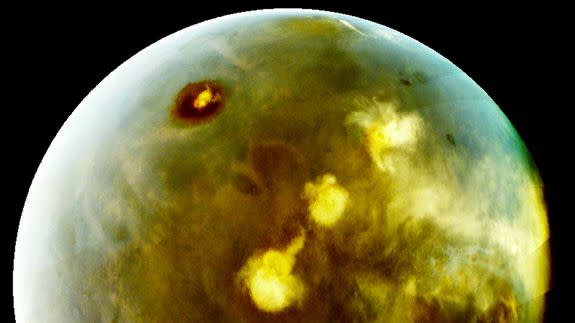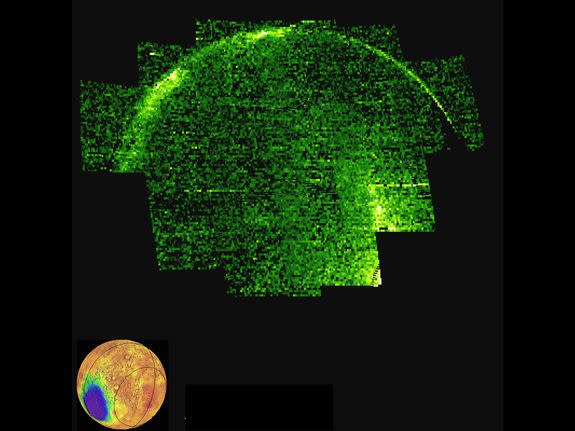New video reveals clouds forming above volcanoes on Mars

New ultraviolet images beamed from Mars by NASA's MAVEN spacecraft show huge swaths of clouds forming above the red planet in incredible new detail. The imagery also reveals a never-before-observed glow on the planet's nightside.
These new discoveries are helping scientists understand the intricacies of how the planet's thin atmosphere functions.
SEE ALSO: Read 5 Haikus That Will Be Sent to Mars
"MAVEN obtained hundreds of such images in recent months, giving some of the best high-resolution ultraviolet coverage of Mars ever obtained," Nick Schneider, MAVEN (short for Mars Atmosphere and Volatile Evolution mission) scientist, said in a statement.
The spacecraft spotted the clouds forming above four huge Martian volcanoes in images collected on July 9 and 10, and they appear to form in much the same way as clouds form above mountains on Earth, NASA said.
"Mars’ tallest volcano, Olympus Mons, appears as a prominent dark region near the top of the images, with a small white cloud at the summit that grows during the day. Olympus Mons appears dark because the volcano rises up above much of the hazy atmosphere which makes the rest of the planet appear lighter," NASA said in the statement.

Image: NASA/MAVEN/University of Colorado
"Three more volcanoes appear in a diagonal row, with their cloud cover merging to span up to a thousand miles by the end of the day," NASA added.
This isn't the first time scientists have seen clouds on Mars. The Pathfinder mission snapped photos of clouds in the Martian sky in the 1990s, and an image from the Hubble Space Telescope earlier this year also shows clouds high above the red planet.
The new MAVEN images do break new ground in revealing Martian "nightglow," which is a "common planetary phenomenon in which the sky faintly glows even in the complete absence of external light," NASA said. Earth, for example, has nightglow.

Image: NASA/MAVEN/University of Colorado
Mars' glow comes from nitric oxide seen in ultraviolet wavelengths of light. Light from the sun breaks down molecules of carbon dioxide and nitrogen and winds spread them over Mars, which gradually brings the atoms down to lower altitudes on the planet's night side, according to NASA.
Nitrogen and oxygen then slam into one another, creating the glowing nitric oxide molecules on the night side of the planet.

Image: NASA/MAVEN/University of Colorado
While researchers had predicted that nightglow would exist on Mars, these MAVEN images mark the first time it has been documented.
MAVEN launched to Mars in 2013, arriving at the red planet in 2014. During the past two years, the spacecraft has beamed back numerous images from orbit and helped further refine NASA's understanding of how the thin Martian atmosphere works today.
The spacecraft also provided data that helped reveal how much of Mars' atmosphere was stripped away by the solar wind billions of years ago.
